Dimensional Packing: Packing Products into Boxes (Best-Fit)
Optimize product packing by using ShipperHQ’s Best-Fit algorithm for efficient box utilization
Table of Contents
Overview
This article illustrates how ShipperHQ's best-fit packing algorithm works when you have products with dimensions and boxes configured in ShipperHQ. Each box has “Apply to all products” set to Yes. 😊
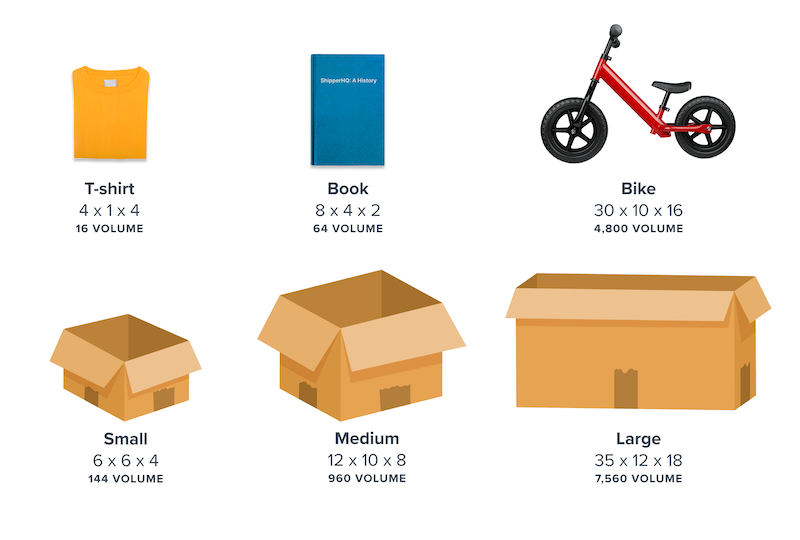
Scenario
Let's say you have 3 SKUs with varying dimensions that need to be packed together into pre-defined boxes:
- BIKE - 30x10x16
- T-shirt - 4x1x4
- Book - 8x4x2
These can pack together into one of several boxes:
- Small - 6x6x4
- Medium - 12x10x8
- Large - 35x12x18
Packing Calculations
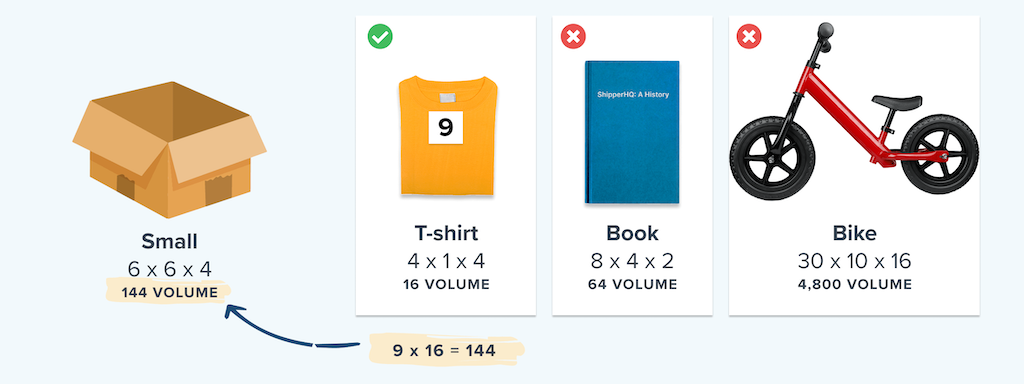
The small box has a volume of 144 (6x6x4).
- T-shirt has a volume of 16 (4x1x4) so up to 9 can fit into this box
- The lengths of the "Book" and "BIKE" products are larger than the dimensions of this box, so they cannot pack
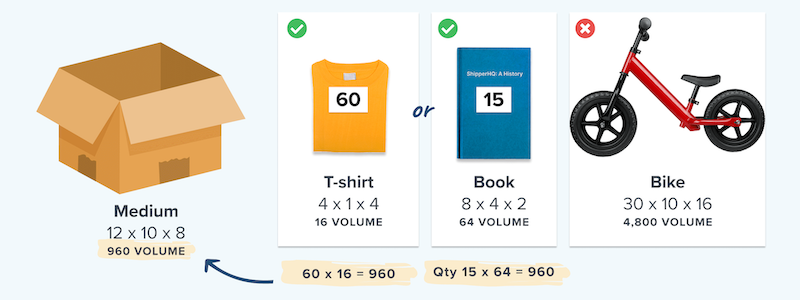
The medium box has a volume of 960 (12x10x8).
- T-shirt has a volume of 16 (4x1x4) so up to 60 can fit into this box
- Book has a volume of 64 (8x4x2) so up to 15 can fit into this box
- The length of the "Bike" is larger than the dimensions of this box, so it cannot pack
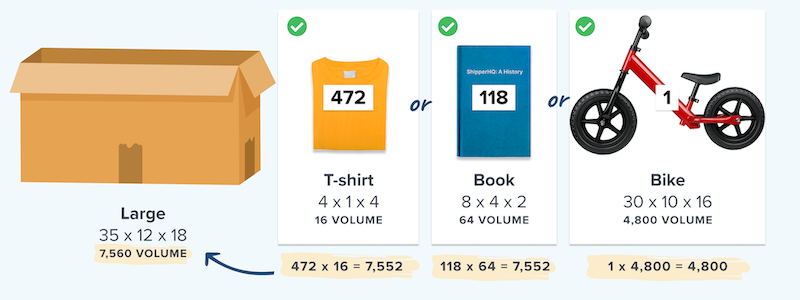
The large box has a volume of 7,560 (35x12x18).
- T-shirt has a volume of 16 (4x1x4) so up to 472 can fit into this box
- Book has a volume of 64 (8x4x2) so up to 118 can fit into this box
- Bike has a volume of 4,800 so 1 can fit into this box
Special Considerations
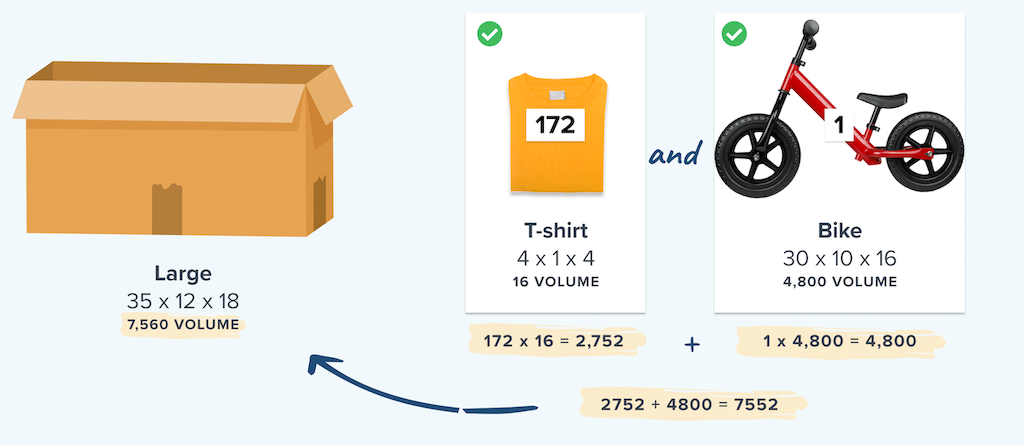
The T-shirt is malleable so we want to retain the use of volume-based packing for this product. 💡
Although the bike is not malleable, multiple T-shirts could be packed inside the frame and items placed underneath the frame, so volume is preferred here too.
You may need to fine-tune how you pack different quantities of items into boxes, such as setting limits on weight or quantity or adjusting the dimensions of the products being packed.